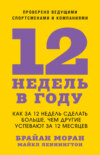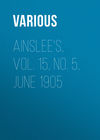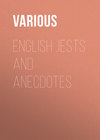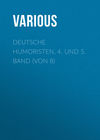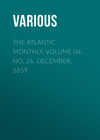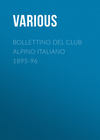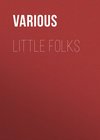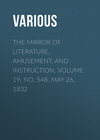Читать книгу: «Birds and Nature, Vol. 12 No. 3 [August 1902]», страница 5
AMBER
Few minerals have been longer in favor for ornamental purposes than amber. Among remains of the earliest peoples such as the Egyptians and Cave-dwellers of Switzerland it is found in carved masses indicating that it was highly prized. The Phenicians are said to have sailed to the Baltic for the purpose of procuring it, while the Greeks’ knowledge of it is indelibly preserved in our word electricity derived from their word elektron. The high favor in which the ancients regarded amber has hardly endured however to the present time. Were it not for its use for mouthpieces of pipes and other smokers’ articles and the occasional amber necklace to be seen, amber would hardly be known among the present generation in our country.
Amber is a fossil gum of trees of the genus Pinus and is thus a vegetable rather than mineral product. In color it is yellow, varying to reddish, brownish and whitish. Its hardness is 2 to 2.5, it being slightly harder than gypsum and softer than calcite. It cannot be scratched by the finger nail but easily and deeply with a knife. It is also brittle. Its specific gravity is scarcely greater than that of water, the exact specific weight being 1.050-1.096. It thus almost floats in water, especially sea water. It is transparent to translucent. On being heated it becomes soft at 150 degrees and at 250 degrees to 300 degrees melts. It also burns readily and at a low temperature, a fact which has given rise to the name of bernstein by which the Germans know it, and to one of the Roman names for it, lapis ardens. Rubbed with a cloth it becomes strongly electric, attracting bits of paper, etc. As already noted, our word electricity comes from the Greek for amber, this seeming to be one of the first minerals in which this property was noted. Amber being a poor conductor of heat feels warm rather than cold in the hand, contrary to most minerals. It is attacked but slowly by alcohol, ether and similar solvents, a property by which it may be distinguished from most modern gums and some other fossil ones. In composition it is an oxygenated hydrocarbon, the percentages of these elements being in an average sample, carbon 78.94, hydrogen 10.53 and oxygen 10.53. The mineralogical name of amber is succinite, a word derived from the Latin succum, juice. One of its constituents is the organic acid called succinic acid.
The present source of most of the amber of commerce is the Prussian Coast of the Baltic Sea, between Memel and Dantzig, although it is found as far west as Schleswig-Holstein and the Frisian Islands and even occasionally on the shores of Denmark, Norway and Sweden. From time immemorial pieces of amber have been cast upon the shore in these localities and their collection and sale has afforded a livelihood to coast dwellers. Such amber is called sea stone or sea amber and is superior to that obtained by mining, since it is usually of uniform quality and not discolored and altered on the surface. Owing to its lightness the amber is often found entangled in seaweed and the collectors are accustomed to draw in masses of seaweed and search them for amber. Amber so obtained is called scoopstone, nets being sometimes used to gather in the seaweed. In the marshy regions men on horse-back, called amber riders, follow the outgoing tide and search for the yellow gum. It is also searched for by divers to some extent. From the earliest times the title to this amber has vested in the State and its collecting has been done either under State control or as at present when a tax is levied by the government upon it. This tax is levied on the amber that is mined as well as that obtained from the sea and brings a revenue at the present time of about $200,000.
Up to 1860 the methods of procuring amber were largely confined to obtaining it in the manner above noted. As it was evident however that the sea amber came from strata underneath and that if either by dredging or mining these strata could be reached a much larger supply could be obtained, exploration was carried on by mining methods with successful results, and the principal amount of the amber of commerce is now so obtained. The strata as shown in the mines of Samland, the rectangular peninsula of East Prussia where most of the mining is carried on, are: First, a bed of sand; below this a layer of lignite with sand and clay, and following this a stratum of greensand, fifty or sixty feet in thickness. While all these strata contain scattered pieces of amber, it is at the bottom of the greensand layer that the amber chiefly occurs, in a stratum four or five feet thick and of very dark color. It is called the “blue earth.” This stratum is of Tertiary age and there can be no doubt that its amber represents gum fallen from pines which grew at this period and whose woody remains are represented to some extent in the layer of lignite. It is probably true as Zaddach remarks that the amber has been collected here from older deposits. One of the most interesting proofs of the vegetable origin of amber is the occurrence in it of insects, sometimes with a leg or wing separated a little distance from the body, showing that it had struggled to escape. These insects include spiders, flies, ants and beetles, while the feather of a bird has even been found thus preserved. Indeed the amber deposits have furnished important contributions to our knowledge of Tertiary life. Inasmuch as the pieces bearing such remains are valued more highly than ordinary amber, unscrupulous persons have at times found profitable employment in boring cavities into pieces of amber, introducing flies or lizards into them and then filling up the hole with some modern gum of the same color. It is said that all amphibious or water animals seen in amber have been introduced in this way.
Besides the counterfeiting of the inclusions of amber there are several substitutes for the gum itself. These are chiefly celluloid and glass, the substitution of the former being dangerous if used for the embellishment of pipes, on account of its inflammatory character. Celluloid can be distinguished from amber by the fact that when rubbed it does not become electric and gives off an odor of camphor instead of the somewhat aromatic one of amber. It is also quickly attacked by alcohol or ether, and when scraped with a knife gives a shaving rather than a powder as amber does. Glass can be distinguished by its cold feeling and greater specific gravity.
Besides these substitutes it has been found possible by heating and pressing the scraps of amber not large enough for carving to make them into a homogeneous mass which is sometimes sold as amber and sometimes as amberoid. Amber is worked to desired shapes by turning it on lathes or by cutting by hand. By heating it in linseed oil it becomes soft so that it can be bent and often all opaque spots can be made to disappear by such treatment. The amber which is most highly prized of any in the world comes from Sicily. Eight hundred dollars have been paid for pieces of this no larger than walnuts, making their value nearly equal to that of diamonds. The beauty of the Sicilian amber consists in the variety of colors which it displays, blood red and chrysolite green being not uncommon, and the fact that these often exhibit a brilliant fluorescence, glowing within with a light of different color from the exterior. Chemically the Sicilian amber is not the same as the Prussian as it contains less succinic acid and is somewhat more soluble. In other respects it is not essentially different. It occurs chiefly on the eastern and southeastern coasts being washed up in a manner very similar to the Prussian amber.
Amber has been found in several places in the United States, but there is little of commercial value. It is mostly connected with the Cretaceous glauconitic or green sand deposits of New Jersey, fragments being frequently found there. This amber is of yellow color but not so compact or lustrous as foreign amber. Amber has also been reported from the marls of North Carolina, some of the coal beds of Wyoming and in connection with lignite in Alaska. In the latter region the natives are said to carve it into rude beads.
Amber occurs in small quantities in several countries of Europe, such as near Basel in Switzerland, near Paris in France, and near London in England. It is also found in many parts of Asia, these localities being a source of supply to the Asiatic countries such as China and India. Occasionally amber is obtained from Mexico which has the beautiful fluorescence of the Sicilian article, though the exact locality whence it comes is not known. Specimens of carved amber are found among the relics of the Aztecs and it is probable that they used it for incense. The early use of amber by European peoples has already been referred to. There are references to it in the most ancient literature and worked masses of it are found among human relics of the greatest antiquity. Up to comparatively modern times it was an important article of commerce among widely scattered peoples and had much to do with bringing about communication between them. Together with tin it was one of the chief objects which led the Romans to penetrate the Gallic regions to the west and north of the Mediterranean and Pliny says that “it had been so highly valued as an object of luxury that a very diminutive human effigy made of amber had been known to sell at a higher price than living men, even in stout and vigorous health.” One of the most elaborate of the Greek myths is that which accounts for the origin of amber. It runs in this wise: – Phaethon, undertaking to drive the chariot of his sun god father, Helios, lost control of his steeds and approaching too near the earth set it on fire. Jupiter to stop him launched a thunder-bolt at Phaethon and he fell dead into the Eridanus. His sisters lamenting his death were changed into poplars and their tears became amber.
In the Odyssey one of Penelope’s admirers gives her an amber necklace, and Martial compares the fragrance of amber to the fragrance of a kiss. Milton writes of amber and Shakespeare mentions it both in “Love’s Labor Lost” and “The Taming of the Shrew.”
Necklaces of amber are popular wedding presents among the peasants of Prussia and they form an important feature of the ornaments worn by many African chiefs.
The properties assigned to amber both as a charm and as a medicine have been many. From the earliest times it has been used as an amulet, being supposed to bring good luck and to protect the wearer against the evil eye of an enemy. Necklaces of amber beads are used to this day as preventive or curative of sore throat and the Shah of Persia wears around his neck a cube of amber reported to have fallen from heaven in the time of Mohammed, which is supposed to have the power of rendering its wearer invulnerable. Amber was also taken internally in former times as a cure for asthma, dropsy, toothache and other diseases and to this day is prescribed by physicians in France, Germany and Italy for different ailments.
The use of amber for artistic and decorative purposes has declined considerably since the Middle Ages, but magnificent illustrations of its employment for these purposes are to be seen in many European museums, notably the Green Vaults of Dresden.
Though so soft and easily destructible a substance it endures with ordinary care as well as the hardest stone, and works of art formed from amber are as well preserved as any to be found.
MALICHITE
Malachite is a green opaque mineral whose color indicates a salt of copper. It is a carbonate of copper containing water, the percentages being in the typical mineral, cupric oxide 71.9, carbon dioxide 19.9, and water 8.2. It is the common form which copper assumes when it or even its ores oxidize in the air. Many of the green stains on rocks or minerals can be correctly referred to malachite. It is only valued for ornamental purposes however when it occurs in compact masses usually exhibiting concentric layers. Malachite in this form takes a fine polish. Malachite is not a hard mineral, its hardness being between 3.5 and 4. It can therefore be scratched with a knife. It is comparatively heavy, weighing four times as much as an equal bulk of water. When heated before the blowpipe it fuses easily, coloring the flame green. By heating long enough on charcoal it can be made to yield a globule of copper. It is easily attacked by common acids, causing effervescence of carbon dioxide. This test can be used to distinguish it from the silicate of copper, chryscolla, which has the same color.
Besides its occurrence in massive forms as noted above Malachite not uncommonly occurs in tufts and rosettes incrusting other minerals. This is an especially common occurrence in mines in Arizona and affords specimens of great beauty especially when the green tufts of malachite are seen upon brown limonite, for then the appearance of moss on wood is closely simulated. Such material is of course too fragile to be used for decorative purposes.
Malachite is prepared for ornamental use by sawing masses of the character of those previously referred to into thin strips which are then fastened as a veneer on vessels of copper, slate or other stone previously turned to the desired shape. Putting pieces together so that neither by their outlines nor color will it appear that they are patchwork requires a high degree of skill and such work is done almost exclusively in Russia. Table tops, vases and various other vessels are manufactured in this way and form objects of great beauty. The pillars of the Church of Isaac in St. Petersburg are of malachite prepared in this way and there are similar pillars in the Church of St. Sophia, Constantinople, said to have been taken from the Temple of Diana at Ephesus.
Occasionally the desired object can be turned from a single piece of malachite, but pieces of sufficient size for this purpose are rare. Bauer describes one piece found in the Gumeschewsk mines which was 17½ feet long, 8 feet broad and 3½ feet high and compact throughout. This is probably the largest single mass known.
Russia furnishes most of the malachite suitable for work of this kind and the art of cutting and fitting the stone is possessed almost exclusively in that country. Most of the Russian malachite has been obtained from the mines of Nischne-Tagilsk and Bogoslowsk in the northern Urals, or Gumeschewsk in the southern. The supply has gradually decreased till now only the Nischne-Tagilsk mines are productive. The malachite is said to occur there in veins in limestone.
Besides the Urals, fine malachite suitable for cutting comes from Australia. Burra Burra in New South Wales and Peak Downs in Queensland are localities whence good Australian malachite is obtained.
Malachite as a mineral is common in copper mines in the United States but it is only in Arizona that it is found of a quality suitable for cutting. A variety from Morenci, Arizona, consists of malachite and azurite and gives a combination of green and blue that is unique and pleasing. (See colored plate.) Less use has been made of such material for ornamental purposes than might have been for most of it has unfortunately been smelted as a copper ore.
Malachite is rarely used for rings or small jewels but is cut into earrings, bracelets, inkstands and similar objects. Art objects of malachite seem to have been in much favor with Russian emperors as gifts to contemporaneous sovereigns, and so bestowed are to be seen in numerous palaces in Europe. Perhaps the most famous of these gifts is the set of center tables, mantel pieces, ewers, basins and vases presented by the Emperor Alexander to Napoleon and still to be seen in an apartment of the Grand Trianon at Versailles.
Malachite was well known to the ancients and like other precious stones was worn as an amulet. It was called pseudo-emerald by Theophrastus. Its name is from the Greek malake, the word for mallows and was given doubtless on account of its green color.
Azurite, the blue mineral which often accompanies malachite is likewise a hydrous carbonate of copper and occasionally occurs so that it can be used with malachite for ornamental purposes.
Oliver Cummings Farrington.

![Birds and Nature, Vol. 12 No. 3 [August 1902]](https://cdn.litres.ru/pub/c/cover_100/25569231.jpg)







